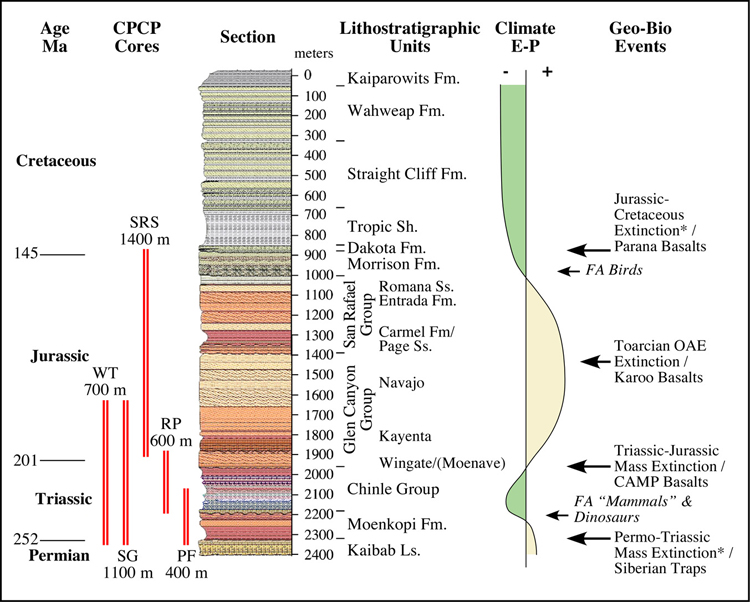
 |
| Figure 2: Generalized Colorado Plateau section (Glen Canyon/Kaiparowits Plateau, based on http://jan.ucc.nau.edu/~rcb7/Glen_Can.jpg) with the cored sections recommended by the CPCP workshop participants, a generalized evaporation – precipitation (E-P) curve loosely based on climate sensitive facies, and some major geolofical and biological events (* actual boundary may or may not be present in rock section). See Figure 1 for core area abbreviations. Note that the relative thicknesses of various units are in general different than what is shown in the color section and not the same between different coring areas. |